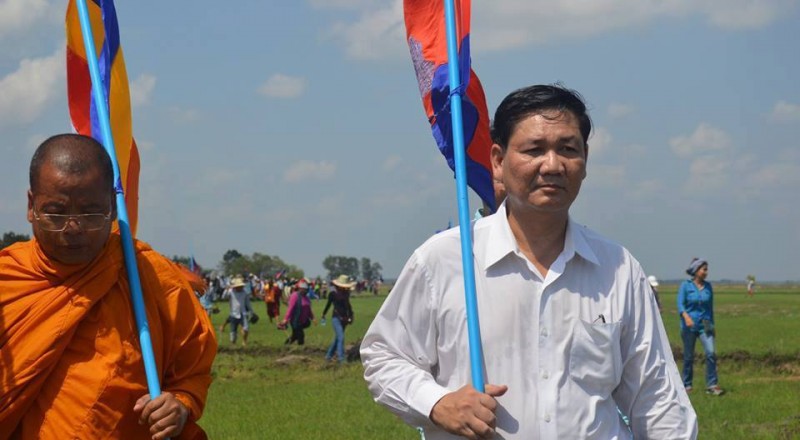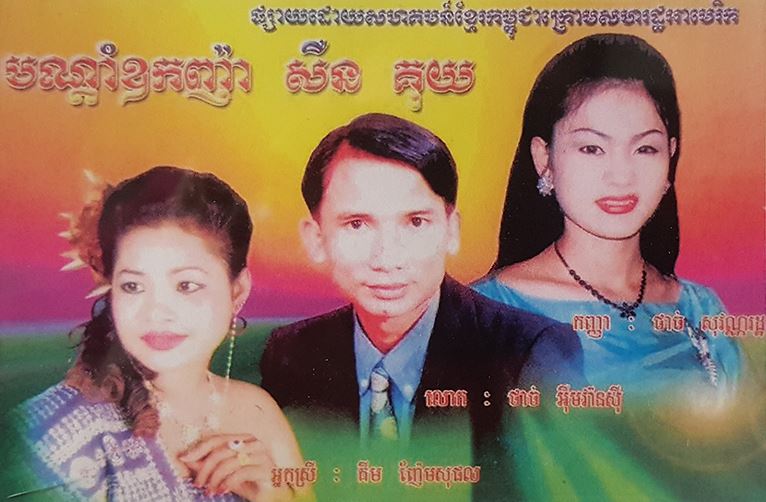Innovate to eliminate: community-focused malaria interventions in Cambodia and Lao People’s Democratic Republic
ថ្ងៃសុក្រ ១៥រោច ថ្ងៃសីល ខែផល្គុន ឆ្នាំឆ្លូវ ត្រីស័ក ព.ស.២៥៦៥ ត្រូវនឹងថ្ងៃទី១ ខែមេសា គ.ស.២០២២
Friday the 15th Waning Moon, Holy Day, of Phagguṇa B.E.2565 equivalent to April 1, A.D.2022 Year of the Cow
WHO
How do you design a malaria elimination programme for hard-to-reach communities who already have difficulty accessing health care? This is the question confronting malaria workers across the Greater Mekong subregion.
Malaria cases in Cambodia and Lao People’s Democratic Republic are mostly found among people living and working in or around the remote forests that cover parts of both countries. Dense trees and plenty of shade provide the perfect breeding grounds for the mosquitoes that carry malaria.
These isolated areas are also home to indigenous and minority communities that may not speak Khmer or Lao. Here, many families practice traditional forms of healing and are not affiliated with national health providers as the closest clinics can be hours away. In these settings, malaria workers must go the extra mile to ensure that communities understand malaria prevention and facilitate elimination efforts.
“We knew that some malaria patients from indigenous communities were delaying treatment because they were more comfortable visiting a local traditional healer rather than seeking care from a malaria worker,” says Matt Shortus, Technical Officer from WHO in Lao People’s Democratic Republic. “In certain communities, this is linked to a belief that illnesses (like malaria) are caused by evil spirits. When we started looking into strategies for delivering better malaria services to hard-to-reach populations, we knew we needed to understand their needs and beliefs and work from there.”
Strategies for P. falciparum elimination
Cambodia and Lao People’s Democratic Republic are making steady inroads towards eliminating P. falciparum malaria, the deadliest strain of the disease. Both countries are aiming to eliminate this strain from the Greater Mekong subregion by 2023.
From 2020 to 2021, Cambodia and Lao People’s Democratic Republic saw a 65% and 14% decrease in P. falciparum cases, respectively. This improvement is remarkable given that both countries continue to find evidence of P. falciparum malaria with partial resistance to artemisinin, the core component used in antimalarial medication.
The recent progress has been spurred by innovative approaches to accelerate P. falciparum elimination in the 2 South-East Asian countries. National malaria programmes, partners, WHO’s Country Offices and Mekong Malaria Elimination programme have designed these to reflect nuances in local epidemiology, geography, and population behaviour.
At their core, the innovative approaches continue to support the decentralization of malaria services from distant health centres to community members assigned the role of village malaria workers. In many cases, they leverage support from existing village malaria workers by expanding their roles to reinforce early diagnosis, vector control, and prophylaxis for at-risk communities, including targeted drug administration (TDA) and intermittent preventive treatment for forest goers (IPTf). Most importantly, they take advantage of the local know-how of village malaria workers to engage and educate households about malaria risks, elimination goals, and encourage prevention.
Cambodia’s “last mile” to malaria elimination
The first country to adopt the foci-based innovative approaches was Cambodia (where the combined interventions are known as the “last mile” to malaria elimination). The “last mile” activities were launched in November 2020 and cover the five provinces where malaria transmission still occurs. That year, the country recorded 961 P. falciparum cases. By the end of 2021 the country broke its own records with only 341 P. falciparum cases.
Although the recent activities have seen promising results, the building blocks for better community dialogue on malaria elimination have been years in the making. The success of the last mile was contingent on villagers in high-risk areas agreeing to increased testing, regular fever screening, and in some cases, taking preventive antimalarial medication. This expansion meant that village malaria workers needed to gain recognition as reliable sources of malaria care services in their communities.
“A good malaria worker is someone who can empathize with hesitations about new interventions, manage expectations, and find relatable ways for their communities to understand the importance of malaria elimination” explains Dr Céline Christiansen-Jucht, an epidemiologist working for WHO’s Mekong Malaria Elimination programme. To ensure this, village malaria workers were selected for their ability to foster trust and establish themselves as the first point of contact for anyone who thought they may have contracted the disease.
For Bin Chenda, a provincial-based malaria supervisor from Cambodia’s National Center for Parasitology, Entomology and Malaria Control (CNM), gaining the confidence of communities is a matter of finding relatable ways to communicate about malaria.
“I needed to find a way for village malaria workers to understand the importance of increasing testing to make test positivity rates meaningful. I asked them to imagine that a guest arrived in their village, and the first house they see is a yard with weeds. If they only visit this house, they might say that the village has a weed problem. But if they visit every garden, they’d see that all the other houses are flourishing with vegetables and the yard with weeds is an anomaly.”
Chenda explains that this example helped the village malaria workers understand that by visiting every house (or by testing every person), they could show a more realistic picture of the presence of weeds (or malaria) in their village. Two months after Chenda shared this analogy with all the village malaria workers in his area, the province saw an increase in malaria testing from 8000 to 10 000 tests per month.
Accelerator strategies in Lao People’s Democratic Republic
Across the border, Lao People’s Democratic Republic started piloting similar innovative approaches (known as accelerator strategies) in Khammouane Province from July 2021. Prior to this, the National Center for Malariology, Parasitology, and Entomology (CMPE), WHO and other partners focused on improving surveillance so that outbreaks in villages could be responded to quickly.
This in-depth work revealed how important it was to map diversity among villages in malaria hotspots, not only in terms of the malaria burden but also in terms of languages, beliefs, health practices and the movement patterns in high-risk areas, namely forests and cultivation fields. What quickly emerged was a picture of highly distinct communities with complex epidemiological and cultural influences that were having an impact on malaria transmission.
“In some communities we found that delivering malaria services on a house-to-house basis was more effective because it provided an informal way for village malaria workers to encourage health-seeking behaviour,” explains Phonephet Butphomvihane, Technical Officer from WHO “In other communities, a stranger coming and knocking on doors was considered a bad omen, so malaria workers were asked to avoid house visits. From the get-go, we understood we needed to design flexible accelerator strategies if we wanted to have any success in confronting resistance,” he added.
As these innovative approaches begin to be introduced in other parts of the country, WHO will commission ethnographic research to further tailor and improve communication strategies for indigenous communities.
Engaging communities for a malaria-free future
Thanks to the launch of these and other approaches, malaria is already becoming less prevalent in Cambodia and Lao People’s Democratic Republic. As both countries edge towards zero malaria, the disease’s impact on people’s lives will diminish and other health concerns will take precedence.
With countries near this point, village malaria workers need to work even harder for communities to understand asymptomatic transmission, the elimination goals and still take malaria prevention seriously. Going forward, the local-level conversations prompted by the innovative approaches will determine the success of each country’s path to malaria elimination.
In Cambodia and Lao People’s Democratic, WHO has been working with the CNM, CMPE and partners to support the country’s malaria elimination efforts. WHO’s malaria work at the country-level and WHO’s Mekong Malaria Elimination programme are made possible with contributions from the Global Fund to Fight AIDS, Tuberculosis and Malaria, U.S. President’s Malaria Initiative, and the Bill & Melinda Gates Foundation.
Related
សូមគាំទ្រឧបត្ថម្ភ សហគមន៍ខ្មែរក្រោម Support KKC
សូមអរគុណដ៏ជ្រាលជ្រៅចំពោះសប្បុរសជននូវវិភាគទានទាំងនេះ។
We’re On Facebook

Sign in
Click here to reload the page over ssl.








